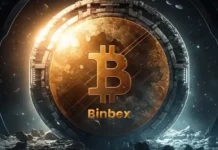Ethereum was developed to establish the surrounding ecosystem and provide additional functionality besides Bitcoin. Since its launch, Ethereum has grown to be a multimillion-dollar project and is now a foundation for many others. Before you buy Ethereum, just like any other investment, you must understand the do’s and don’t’s. This article looks at the key outlook on building blocks on Ethereum for every investor who intends to buy Ethereum. Keep reading.
Overview of Building Blocks on Ethereum
Ethereum building blocks is a blockchain-based application that allows programmers to build and install decentralized apps without the involvement of a central authority. You can create a decentralized application, but the contributors to that application have the authority to make decisions.
Blocks are collections of transactions that have the block’s hash before them in the chain. Hashes are crypto graphically formed from the block data. Hence, this connects the blockchain.
Hashes prevent fraud since if any block in history were to change, all subsequent hashes would also change, invalidating all subsequent blocks and alerting everyone who buys Ethereum or is managing the blockchain about the change.
Blocks Workings on Ethereum
Blocks and transactions within blocks are strictly regulated to maintain the transaction history (each newly formed block carries a reference to its parent block).
Unless there are exceptional circumstances, at any one time, all network users agree with the precise number and history of blocks as they try to combine the pending live transaction requests into the upcoming block.
When a block is put together (mined) by one of the network’s miners, it is disseminated to all other nodes, who add it to the end of their blockchains and continue mining. Ethereum’s “proof-of-work” protocol now specifies the precise block-assembly (mining) process and commitment/consensus procedure.
Front End Layer
MIST
Mist is a wallet that allows us to receive and transfer ether and a web3 browser that communicates with dApps and offers a user-friendly interface to send and receive tokens and sign transactions.
Metamask
Metamask essentially offers the same functions as Mist, but without being a standalone software.
dApps
A dApp is a piece of code that runs concurrently on a decentralized network of nodes that functions as a massive computer; in other words, it is an app that cannot be shut down unless the entire Ethereum network is. Decentralized apps are the most exciting innovation those who buy Ethereum can enjoy.
Core layer
Swarm
For the Ethereum architecture, Swarm offers distributed and redundant storage, allowing dApps to share data and bandwidth effectively. The data is first passed through a chunker, which divides it into chunks with a maximum size of 4 KB.
Each chunk is then hashed and concatenated to create a Merkel tree, and the Merkel root is added to the manifest file, which contains metadata to allow simple URL-based access to the data uploaded to the swarm.
Whisper
Hackers are becoming increasingly skilled to the point that they no longer need to intercept messages to carry out attacks on those who buy Ethereum.
Instead, they only need the message’s shadow. Whisper offers off-chain peer-to-peer messaging with a strong emphasis on obscurity (traces left by the messages).
To prevent DDoS assaults, Whisper employs flood routing, sending messages to all nearby nodes until they reach the recipient who can decode them. Finding the first nonce in a hash that fulfills a goal criterion is necessary for message sealing in envelopes—for instance, a leading number of zeros in the resulting hash.
Ethereum Virtual Machine (EVM)
The Ethereum Virtual Machine (EVM) is intended to act as a runtime environment for smart contracts based on Ethereum. It can be compared to the joining of thousands of nodes (computers) to create a single powerful computer, but its true power lies in its reliability and distributed governance (consensus).
The EVM is 100 percent deterministic, meaning its behavior is predictable. It can only be accessed from the outside world through the Ethereum Virtual Machine and not by those who buy Ethereum.
Back End Layer
Hardware clients are the miners who participate in the consensus protocol by carrying out the proof of work.
While general-purpose CPUs and GPUs can be used for that, for the best results, most miners use special hardware called Application-Specific Integrated Circuit (ASIC); these are circuits built for a specific use, such as mining Ethereum.
The final layer comprises these hardware clients using the internet in a peer-to-peer fashion or solving the Ethereum proof of work for investors who buy Ethereum.



































































